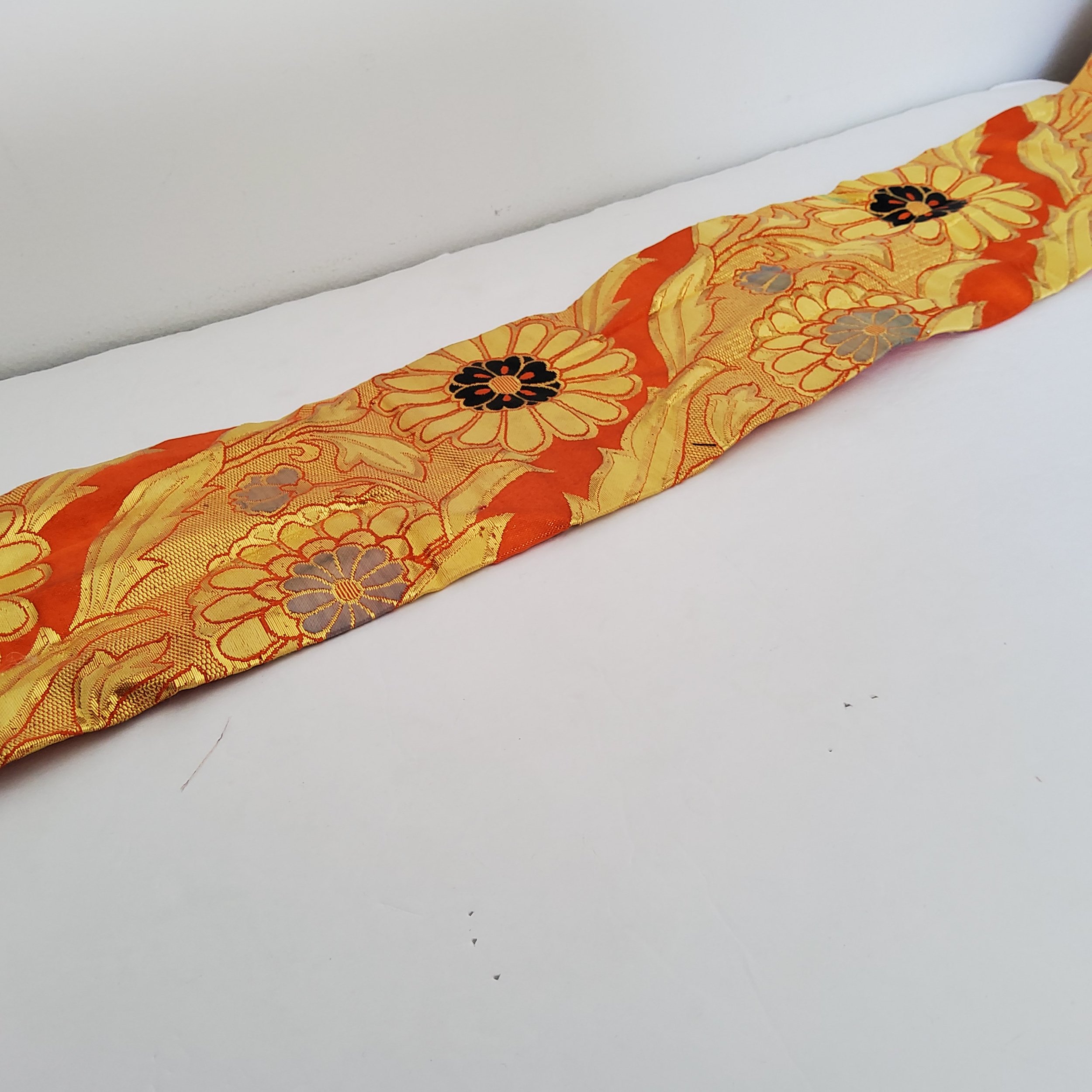Sumi-E Silk Nagoya Obi Belt
Vintage Authentic Kimono Silk Obi Sash
Sumi-E
High Quality Silk
Cotton Like Textured Tsumugi Silk
Nagoya Obi
Hand Painted Countryside Scenery
Ivory Fabric
12in wide x 4yd long approx
*44in design + folded in half part no design 2.8yd (16in of this part has design)
Total 4yds approx
NOT FULLY DESIGNED
Nagoya obi was invented by a seamstress living in Nagoya at the end of Taisyo Era (1920s). The new easy to use obi gained popularity among Tokyo's geisha, from whom it then was adopted by fashionable city women for their eeryday wear. And it is the most used obi type today from casual to semi formal attire depending on its material.
Nogoya obi is distinguished by its structure. One end if folded and sewn in half, other end is of full width. It can be partly or fully patterned.
Vintage Authentic Kimono Silk Obi Sash
Sumi-E
High Quality Silk
Cotton Like Textured Tsumugi Silk
Nagoya Obi
Hand Painted Countryside Scenery
Ivory Fabric
12in wide x 4yd long approx
*44in design + folded in half part no design 2.8yd (16in of this part has design)
Total 4yds approx
NOT FULLY DESIGNED
Nagoya obi was invented by a seamstress living in Nagoya at the end of Taisyo Era (1920s). The new easy to use obi gained popularity among Tokyo's geisha, from whom it then was adopted by fashionable city women for their eeryday wear. And it is the most used obi type today from casual to semi formal attire depending on its material.
Nogoya obi is distinguished by its structure. One end if folded and sewn in half, other end is of full width. It can be partly or fully patterned.
Vintage Authentic Kimono Silk Obi Sash
Sumi-E
High Quality Silk
Cotton Like Textured Tsumugi Silk
Nagoya Obi
Hand Painted Countryside Scenery
Ivory Fabric
12in wide x 4yd long approx
*44in design + folded in half part no design 2.8yd (16in of this part has design)
Total 4yds approx
NOT FULLY DESIGNED
Nagoya obi was invented by a seamstress living in Nagoya at the end of Taisyo Era (1920s). The new easy to use obi gained popularity among Tokyo's geisha, from whom it then was adopted by fashionable city women for their eeryday wear. And it is the most used obi type today from casual to semi formal attire depending on its material.
Nogoya obi is distinguished by its structure. One end if folded and sewn in half, other end is of full width. It can be partly or fully patterned.








































